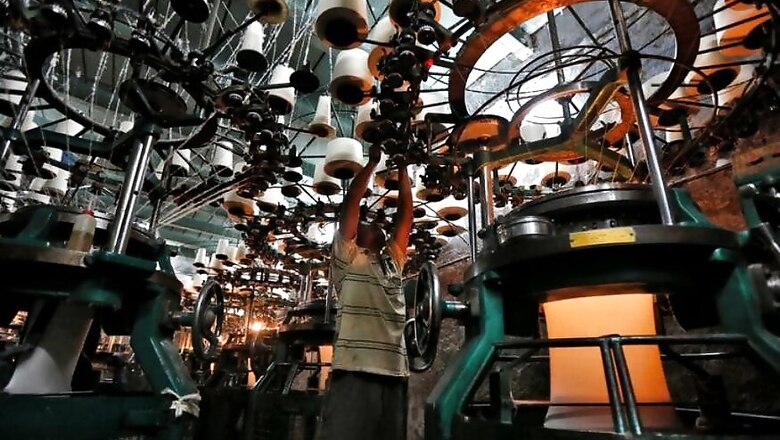
views
New Delhi: India’s GDP numbers took most people by surprise on Tuesday. But on reflection, some economists are saying that there could be an explanation for the numbers that provoked shock, surprise and skepticism.
The Ministry of Statistics on Tuesday released GDP numbers that seemed to suggest that the Indian economy had entirely sidestepped the disruption caused by the invalidation of 500 and 1,000 rupee notes constituting 86% of currency in November.
Briefly, gross domestic product growth for the October-December quarter came in at 7%, whereas the estimate for the full year (2016-17) was 7.1%. This was not only higher than what most analysts had forecast, it was also higher than China’s 6.8% growth for the third quarter.
India managed to retain the ‘world’s fastest growing major economy’ title.
More surprisingly, the data for private consumption show an increase of 11% in the last 3 months of 2016. This is the same period that purchases ground to a halt after Demonetisation due to the cash scarcity.
However, there is an explanation that could reconcile the data with what is actually happening on the ground.
Pronab Sen, the former Secretary of the Statistics Ministry says that the initial response of companies to Demontisation could be the reason why the GD figures look good. Corporates rushed to push their inventory out of factories and into retail outlets. They also paid excise tax on these. However, the sales at the retail outlets did not happen because people decided to postpone purchases.
This is corroborated by the automobile sales data for the months of November and December, which record a fall.
Since GDP data is collected at the factory level (technically called Gross Value Addition), the numbers reflected this, but did not capture the inventories lying idle at automobile showrooms, departmental stores and other retail outlets.
“In fact, the GDP figures for the January-March quarter will probably reflect the disruption caused by demonetisation more accurately,” Pronab Sen told News18. “You can only push out so much inventory, but if it is piling up in retail stores and not being sold, the factories won’t be able to send out manufactured products,” he added.
This could also be the reason that tax collections have shown a healthy rise in the last two months of 2016. People and corporate were paying taxes in demonetized currency in order to get rid of old bank notes. This would have registered as a healthy rise in taxes.
The other reason possibly is that India’s GDP captures economic activity in the formal sector, which constitutes just 10 % to15% of the economy. The real pain of Demonetisation was felt by the informal sector which makes up a major share of the economy and the labour force. The GDP growth figures for the unorganized sector are extrapolated by proxy from the formal sector figures.
“One of the main reasons that the GDP data has not fully reflected the slowdown is because it has not captured the effects on the informal economy,” Upasana Bhardwaj, a senior economist with Kotak Mahindra Bank told News18. Upasna Bhardwaj said that the numbers released by the government on Tuesday were higher than what she was expecting.
Indian agriculture, which employs more than half of India’s working population is entirely informal. While it is true that agricultural production this year increased over last year, which was a drought year, demonetisation lowered the income of farmers.
“GDP measures produce and not incomes, so even if production increases, as it probably has in agriculture, farmers incomes have declined since November and this has not been reflected in the numbers,” Proban Sen added.
Both economists said that the final numbers, which will only come in next year, will give a true picture of how demonetization affected the Indian economy.




















Comments
0 comment